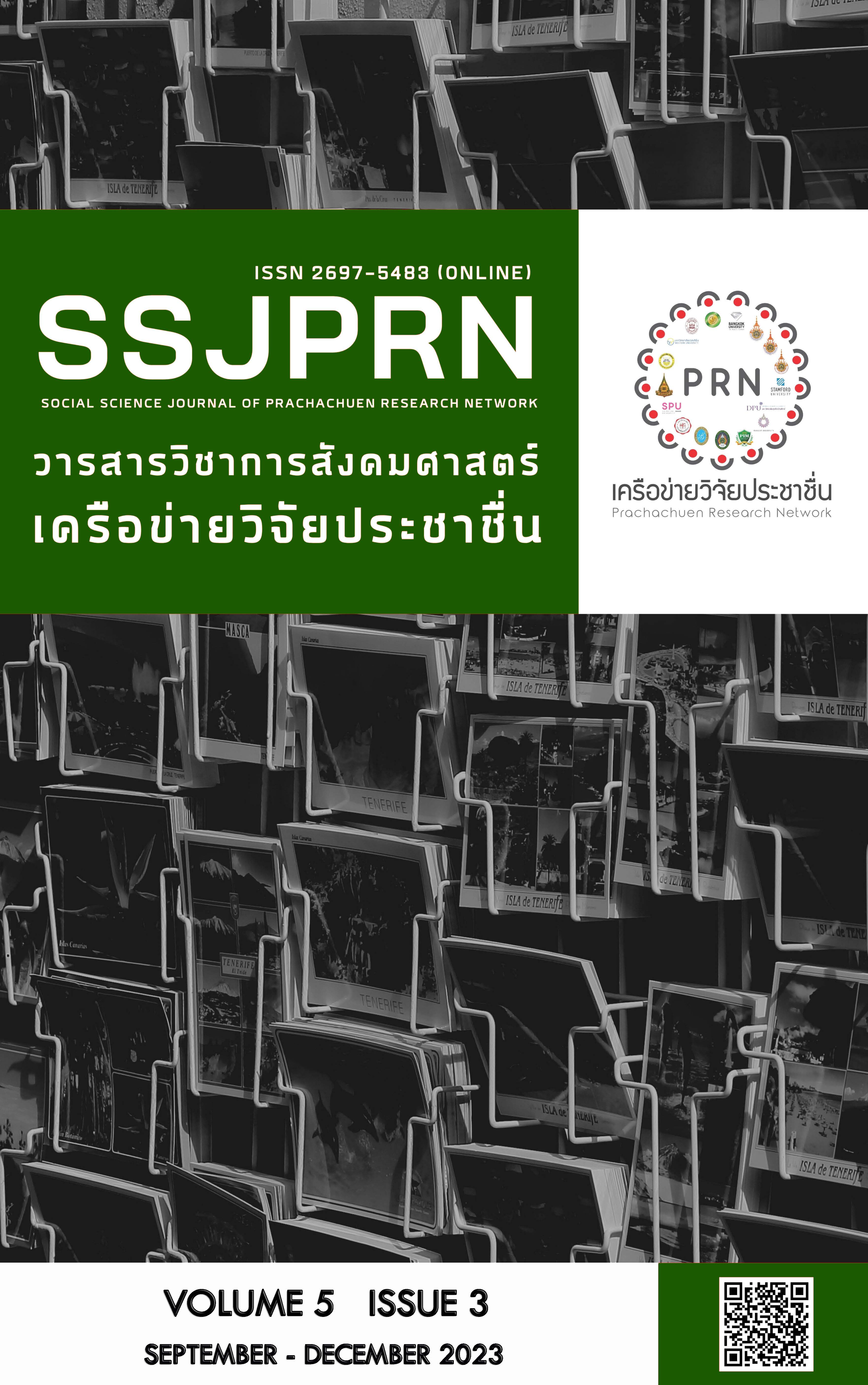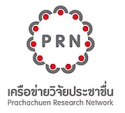ปัจจัยที่ส่งผลต่อการพัฒนาระบบฟาร์มอัจฉริยะในยุคดิจิทัล: แนวทางแอปพลิเคชันบนมือถือ
คำสำคัญ:
เกษตรอัจฉริยะ , อินเทอร์เน็ตและสรรพสิ่ง , อาดุยโน่บทคัดย่อ
การศึกษาในครั้งนี้มีวัตถุประสงค์เพื่อศึกษาปัจจัยของระบบการเกษตรอัจฉริยะสําหรับการเกษตรในยุคดิจิตอล ซึ่งมีการพัฒนาระบบที่มีความรู้เกี่ยวกับเทคโนโลยี IoT ซึ่งสามารถใช้ในการส่งข้อมูลระหว่างอุปกรณ์และสามารถวิเคราะห์ข้อมูลโดยอัตโนมัติด้วยการแสดงข้อมูลในเวลาจริงของเซ็นเซอร์ที่สามารถวัดได้และอุปกรณ์ควบคุมเพื่อควบคุมองค์ประกอบของสิ่งแวดล้อมเพื่อให้เหมาะกับการเจริญเติบโตของพืชด้วยสมาร์ทโฟนมือถือ การวิจัยนี้สามารถลดค่าใช้จ่ายและเวลาของพนักงาน ข้อมูลที่ได้รับจากการวัดจะถูกเก็บไว้ในฐานข้อมูลของผู้ใช้ข้อมูลที่ถูกเก็บรวบรวมจากตัวอย่างทั้งหมด 400 ตัวอย่างของเกษตรกรในท้องถิ่น โดยการตรวจสอบอย่างละเอียดและตามความสะดวกของผู้ตอบสนอง การวิเคราะห์สถิติที่ใช้ในการศึกษานี้คือค่าเฉลี่ยทางคณิตศาสตร์ ความถี่ อัตราเปอร์เซ็นต์ ปกติกับสถิตการวิเคราะห์ที่เปรียบเทียบ
ผลการวิเคราะห์แสดงให้เห็นว่า โมเดลสถาปัตยกรรมของปัจจัยที่ส่งผลกระทบต่อการพัฒนาระบบการเกษตรอัจฉริยะสําหรับเกษตรกรในยุคดิจิตอลที่มีแอพพลิเคชั่นมือถือ เข้ากันได้ดีกับข้อมูลทางประสบการณ์ โมเดลนี้สอดคล้องกับข้อมูลทางประสบการณ์ด้วย Chi – Square = 59.966, df = 45, Sig. = 0.067 > 0.05 และ CMIN/df. = 1.333 < 3.0 ผลการวิเคราะห์จากการปรับตัวของรุ่นแสดงให้เห็นว่ามีความสม่ำเสมอและมีเกณฑ์ค่าสถิติที่สมบูรณ์
เอกสารอ้างอิง
Bollen, K. A. (1989). Structural Equations with Latent Variables. John Wiley and Sons.
Browne, M. W., & Cudeck, R. (1993). Alternative ways of assessing model fit. In K. A. Bollen and J. S. Long (Eds.), Testing structural equation models (pp. 136-162). Sage.
Durand, V. M. (1999). Functional communication training using assistive devices: Recruiting natural communities of reinforcement. Journal of Applied Behavior Analysis, 32(3), 247-267.
Durande-Moreau, A. and Usunier, J. (1999). Time Styles and the Waiting Experience: An Exploratory Study. Journal of Service Research, 2(2), 173-186.
Diamantopoulos, A. & Siguaw, A. D. (2000). Introducing LISREL: A guide for the uninitiated. Sage.
Elijah, O., Rahman, T. A., Orikumhi, I., Leow, C. Y., & Hindia, M. N. (2018). An overview of Internet of Things (IoT) and data analytics in agriculture: Benefits and challenges. IEEE Internet of things Journal, 5(5), 3758-3773.
Farooq, M. S., Abid, R. A., Abid, K., & Naeem, M. A. (2019). A Survey on the Role of IoT in Agriculture for the Implementation of Smart Farming. IEEE Access, 7, 156237-156271. https://doi: 10.1109/ACCESS.2019.2949703.
Jaishetty, S. A., & Patil, R. (2016). IoT sensor network based approach for agricultural field monitoring and control. International Journal of Research in Engineering and Technology, 5(6), 45-48.
Jangaard, L., Mickley, H., Joergensen, G., Schakow, H., Gerke, O., & Henriksen, F. L. (2019). P6382 The use of a mobile GPS-tracking system to activate volunteer first responders increases survival among patients with out-of-hospital cardiac arrest in residential areas. European Heart Journal, 40(Supplement_1), ehz746.0978.
Jebri, S., Abid, M., & Bouallegue, A. (2015). An efficient scheme for anonymous communication in IoT. In 11th International Conference on Information Assurance and Security (IAS) ( pp. 7-12). Marrakech, Morocco.
Hajiar, S. (2014). A statistical study to develop a reliable scale to evaluate instructors within higher institution. WSEAS Transactions on Mathematics 13, 885-894.
Hair J. F., Black W. C., Babin B. J., Anderson R. E., & Tatham R. L. (2006). Multivariate data analysis (6th ed.). Pearson Prentice Hall.
Harrison-Walker, L. Jean. (2001). E-Complaining: A Content Analysis of an Internet Complaint Forum. Journal of Services Marketing, 15(5), 397-412.
Kunstadter, P. R., Chapman, E. C., & Sabhasri, S. (2019). Farmers in the forest: Economic development and marginal agriculture in northern Thailand. University of Hawaii Press.
Liakos, K. G., Busato, P., Moshou, D., Pearson, S., & Bochtis, D. (2018). Machine learning in agriculture: A review. Sensors, 18(8), 2674.
Mueller, R. O. (1996). Basic Principles of Structural Equation Modeling: An Introduction to LISREL and EQS. Springer-Verlag.
O'Grady, M. J., & O'Hare, G. M. (2017). Modelling the smart farm. Information processing in agriculture, 4(3), 179-187.
Jöreskog, K. G., & Sörbom, D. (1996). LISREL 8: User's Reference Guide. Scientific Software International.
Varga, G., Mikala, G., Kiss, K. P., Kosóczki, É., Szabó, E., Meggyesi, N., Balassa, K., Kövy, P., Tegze, B., & Szombath, G. (2017). Proteasome subunit beta type 1 P11A polymorphism is a new prognostic marker in multiple myeloma. Clinical Lymphoma Myeloma and Leukemia, 17(11), 734-742.
Wietzke, A., Westphal, C., Gras, P., Kraft, M., Pfohl, K., Karlovsky, P., Pawelzik, E., Tscharntke, T., & Smit, I. (2018). Insect pollination as a key factor for strawberry physiology and marketable fruit quality. Agriculture, ecosystems & environment, 258, 197-204.
Yong, B., Xu, Z., Wang, X., Cheng, L., Li, X., Wu, X., & Zhou, Q. (2018). IoT-based intelligent fitness system. Journal of Parallel and Distributed Computing, 118, 14-21.
ดาวน์โหลด
เผยแพร่แล้ว
รูปแบบการอ้างอิง
ฉบับ
ประเภทบทความ
สัญญาอนุญาต
ลิขสิทธิ์ (c) 2023 วารสารวิชาการสังคมศาสตร์เครือข่ายวิจัยประชาชื่น

อนุญาตภายใต้เงื่อนไข Creative Commons Attribution-NonCommercial-NoDerivatives 4.0 International License.
บทความที่ได้รับการตีพิมพ์เป็นลิขสิทธิ์ของวารสารวิชาการสังคมศาสตร์เครือข่ายวิจัยประชาชื่น







